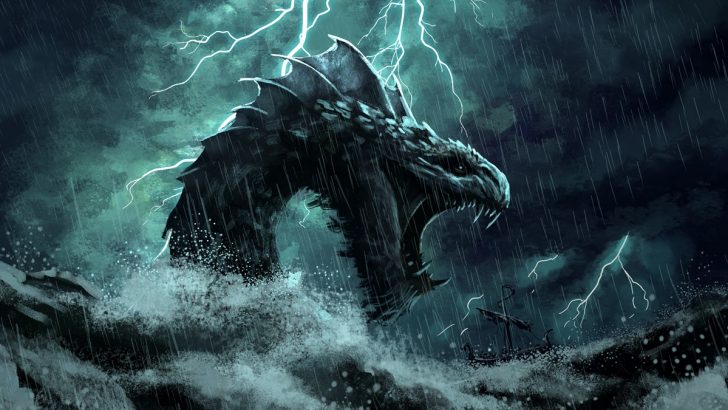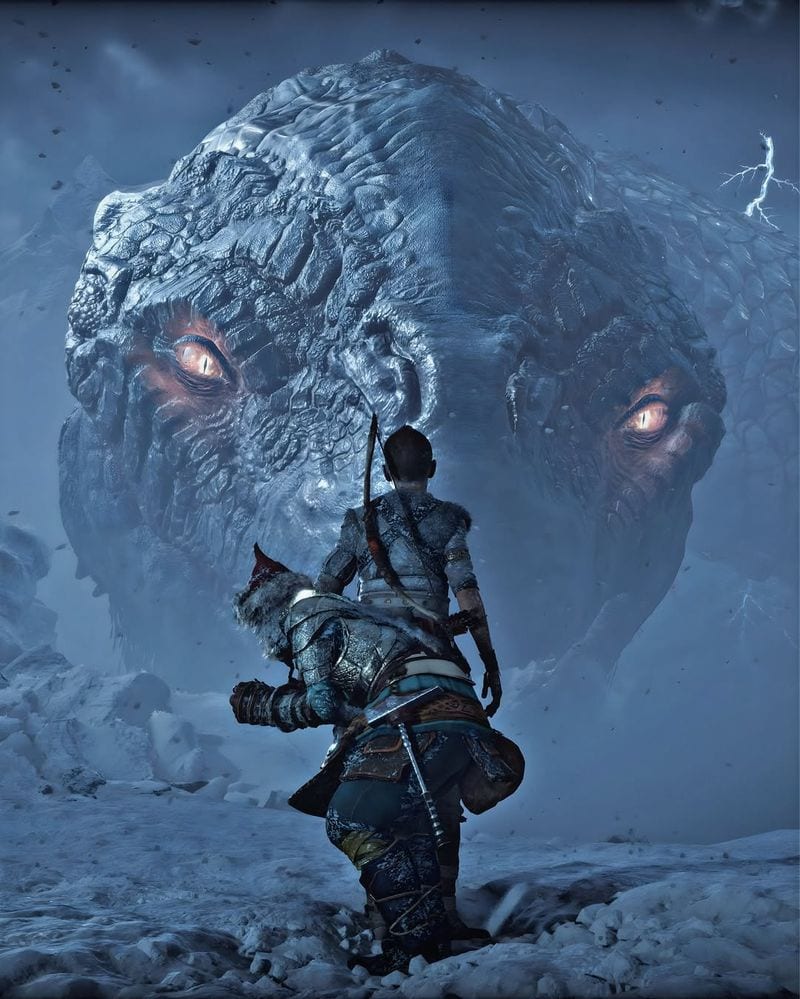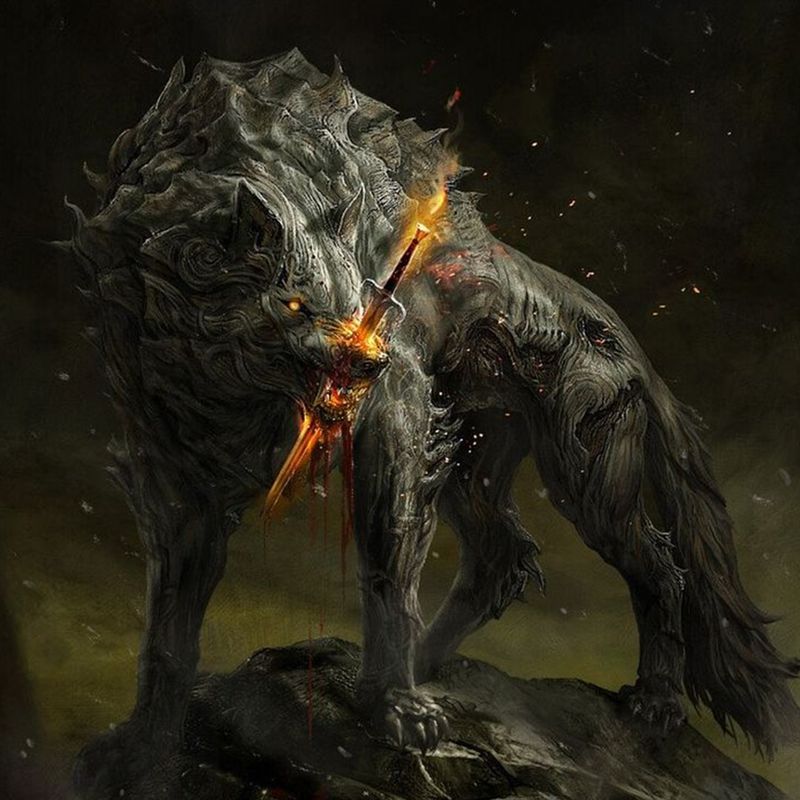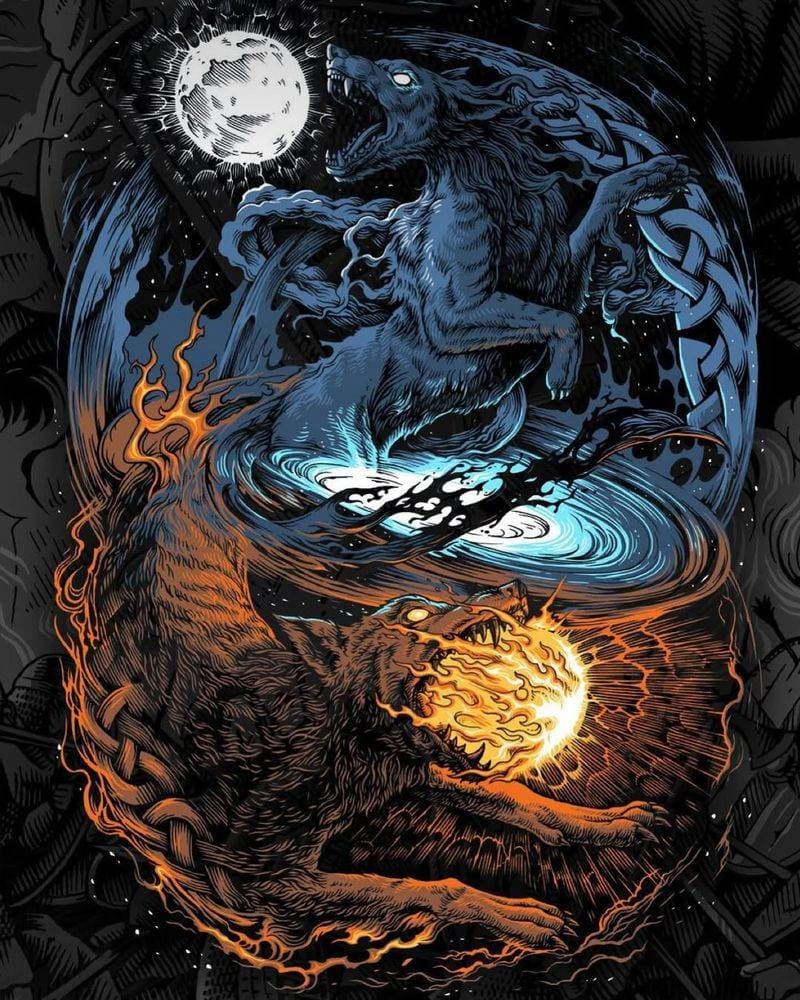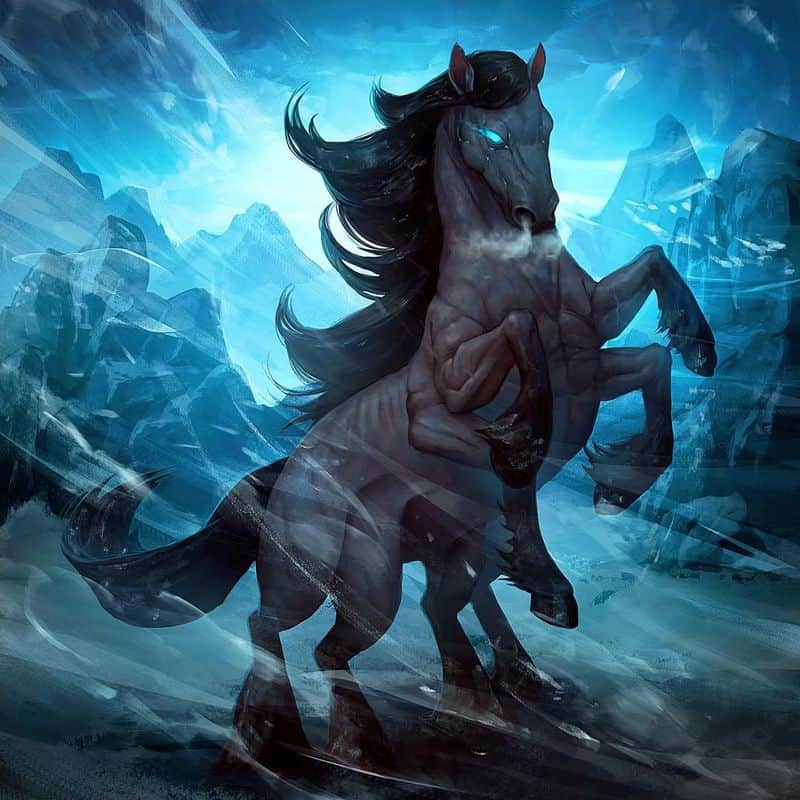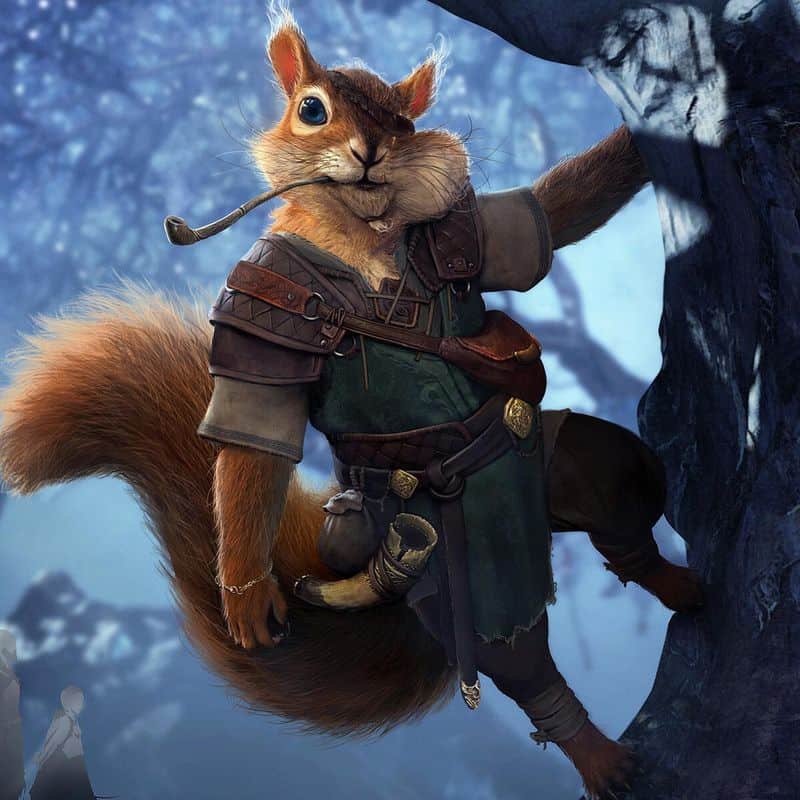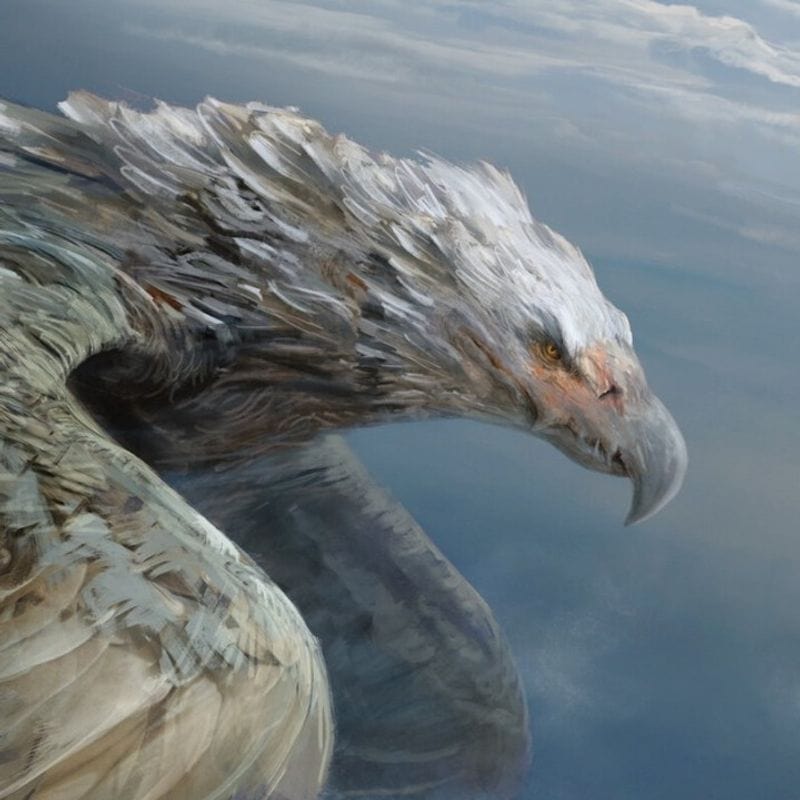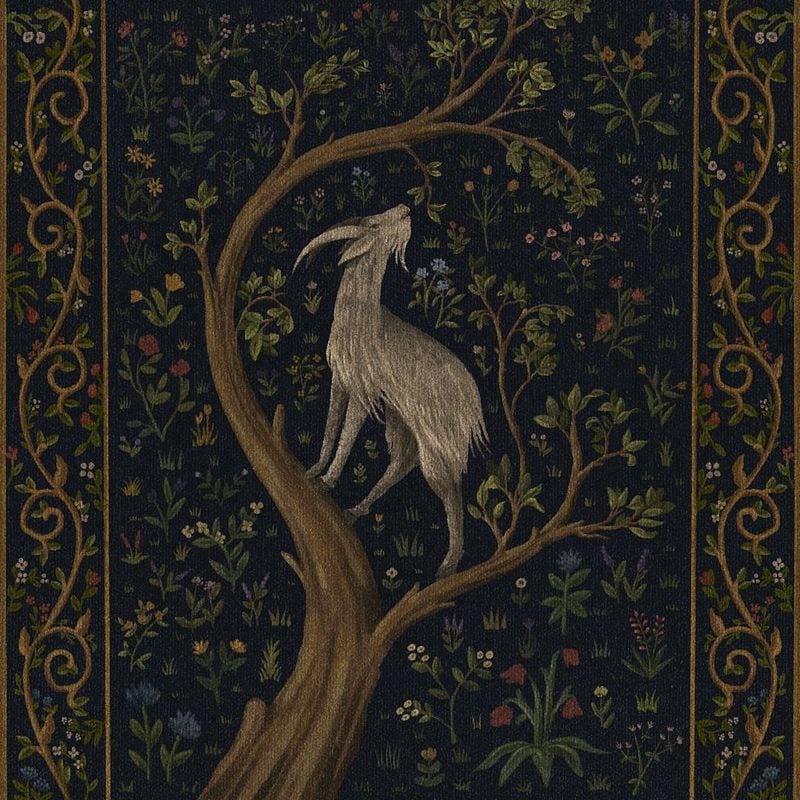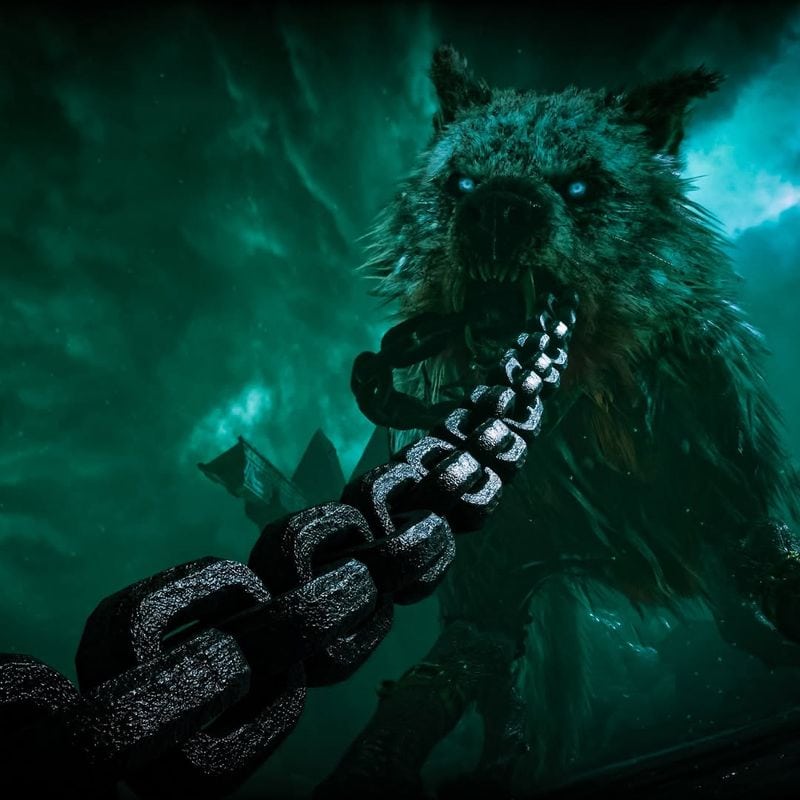Norse mythology brims with extraordinary creatures that both terrified and fascinated the ancient Vikings.
These legendary beasts played crucial roles in the cosmic drama of creation, destruction, and the fate of gods and humans alike.
From serpents that encircle the world to wolves that chase celestial bodies, these mythological creatures embody the raw power and wild imagination of Norse storytelling traditions.
1. Jörmungandr: The World-Encircling Serpent
Born to the trickster god Loki and giantess Angrboða, Jörmungandr grew so massive that Odin hurled him into the great ocean surrounding Midgard. The serpent continued growing until he encircled the entire world, grasping his own tail in an endless loop.
Sailors feared glimpsing his massive scales breaking the surface, knowing such sightings foretold disaster. According to prophecy, during Ragnarök, Jörmungandr will release his tail and rise from the depths to battle Thor.
Though Thor will slay the mighty serpent, the victory comes at a cost—the thunder god will take nine steps before succumbing to the World Serpent’s deadly venom.
2. Fenrir: The Unbound Wolf
Fenrir’s savage howl strikes fear across the Nine Realms. Another of Loki’s monstrous offspring, this colossal wolf grew at an alarming rate, prompting the gods to bind him with magical chains. Twice he broke free from conventional restraints, forcing the dwarves to forge Gleipnir—a ribbon made from impossible things like bird spittle and mountain roots.
Only brave Týr dared place his hand in Fenrir’s mouth as collateral during the binding, losing it when the wolf realized the deception. The prophecies are clear: at Ragnarök, Fenrir will break free and devour Odin himself.
His massive jaws will stretch from earth to sky, bringing doom to the All-Father.
3. Níðhöggr: The Root-Gnawing Dragon
Far below the branches of Yggdrasil, the World Tree, lurks the malevolent dragon Níðhöggr. His endless gnawing at the roots threatens the very foundation of the cosmos. With scales blacker than night and eyes that burn like dying stars, this creature embodies destruction in its purest form.
Níðhöggr doesn’t work alone—he commands an army of serpents that assist in his ceaseless assault on the World Tree. Between attacks, he feasts on the corpses of murderers and oath-breakers in Náströnd, a shore in the realm of Hel.
The dragon trades insults with Ratatoskr the squirrel, who carries his venomous words up to the eagle perched atop Yggdrasil’s highest branch.
4. Draugr: The Vengeful Undead
Imagine the horror of Vikings who discovered that death wasn’t always the end. Draugr are the walking corpses of those who were greedy, wicked, or powerful in life. Their skin appears blue-black, bloated with decay, yet possessing supernatural strength and malice.
Unlike mindless zombies, draugr retain their intelligence and personality, typically guarding their burial treasures with cruel determination. They can change size at will—sometimes appearing massive, other times slipping through tiny cracks to pursue victims.
The only way to truly defeat a draugr is to cut off its head, burn the body, and scatter the ashes in the sea. Even the bravest warriors feared encountering these vengeful undead in their burial mounds.
5. Sköll and Hati: The Celestial Hunters
Look up at the racing sun and moon—they flee for good reason. The mighty wolves Sköll and Hati pursue them relentlessly across the sky. Sons of Fenrir, these cosmic hunters inherited their father’s ferocity and insatiable hunger.
Sköll (“Treachery”) chases Sol, the sun, while his brother Hati (“Hatred”) pursues Mani, the moon. Ancient Norse people interpreted solar and lunar eclipses as near-catches in this eternal hunt.
During Ragnarök, both wolves will finally succeed in their quest, devouring the celestial bodies and plunging the world into darkness. Their triumph signals the beginning of the world’s end—when stars fall and the land sinks into the sea.
6. Sleipnir: The Eight-Legged Steed
Galloping between worlds on eight powerful legs, Sleipnir stands as the most remarkable horse in all of mythology. Gray-coated with runic symbols adorning his flanks, this magnificent steed belongs to Odin himself. His unusual birth story involves Loki transforming into a mare to distract a giant’s stallion, eventually giving birth to this extraordinary creature.
Sleipnir’s eight legs allow him to traverse the Nine Realms with unmatched speed and agility. He can race across land, sea, air, and even the branches of Yggdrasil.
Vikings often carved Sleipnir’s image on burial ships, hoping the mighty steed would carry their deceased loved ones safely to the afterlife in Valhalla.
7. Ratatoskr: The Message-Bearing Squirrel
Darting up and down the vast trunk of Yggdrasil, Ratatoskr might seem harmless compared to other Norse beasts. Don’t be fooled by his diminutive size—this red squirrel carries malicious gossip between the eagle perched atop the World Tree and Níðhöggr dwelling at its roots.
His name translates roughly to “drill-tooth” or “bore-tooth,” fitting for a creature who delights in stirring conflict through rumors and insults. Some scholars believe Ratatoskr represents how quickly destructive words can travel.
Despite his troublemaking nature, this chattering messenger serves an important cosmic function, maintaining communication between the highest heavens and deepest underworld. Without him, the realms might become even more disconnected from one another.
8. Hræsvelgr: The Corpse-Swallower Eagle
Perched atop Yggdrasil’s highest branch sits Hræsvelgr, a giant eagle whose beating wings create all the winds of the world. His name means “corpse-swallower,” hinting at his grim appetite for the dead.
Between his eyes sits a hawk named Veðrfölnir, who watches what the eagle cannot see. When Hræsvelgr flaps his massive wings, storms rage across Midgard, affecting the lives of humans below. Some sailors would pray to him before voyages, hoping to secure favorable winds.
Locked in eternal conflict with Níðhöggr below, Hræsvelgr represents the sky and heavens in Norse cosmology. Their hostility, carried back and forth by Ratatoskr, symbolizes the constant tension between upper and lower realms.
9. Heidrun: The Mead-Producing Goat
Not all Norse beasts inspire terror—Heidrun brings joy to fallen warriors in Valhalla. This magnificent goat stands upon Valhalla’s roof, stretching to feed on the leaves of Læraðr (sometimes identified as Yggdrasil itself).
Her udder produces not milk but endless streams of mead, filling a massive vat from which einherjar—the heroic dead—drink each night. The magical beverage never runs dry, ensuring the warriors remain in good spirits as they prepare for Ragnarök.
Ancient Norse people valued mead as a sacred drink associated with poetry, wisdom, and divine inspiration. Through Heidrun, the gods provide eternal sustenance and pleasure to those who died bravely in battle, honoring their sacrifice with never-ending celebration.
10. Garm: The Blood-Stained Hound
Blood-matted fur and eyes blazing like embers—Garm stands as the most fearsome hound in Norse mythology. This monstrous dog guards the gates of Hel, preventing the dead from escaping the underworld. His chest bears ancient wounds that constantly drip blood onto the ground below.
Chained in Gnipahellir cave, Garm howls when he senses approaching doom. The louder and more frenzied his barking, the closer Ragnarök draws. According to prophecy, when the final battle begins, Garm will break free from his chains.
The hound will face Týr in combat, resulting in mutual destruction—a fitting end for the one-handed god of war and the hound who represents death’s inevitability. Some scholars believe Garm may be another aspect of Fenrir himself.

